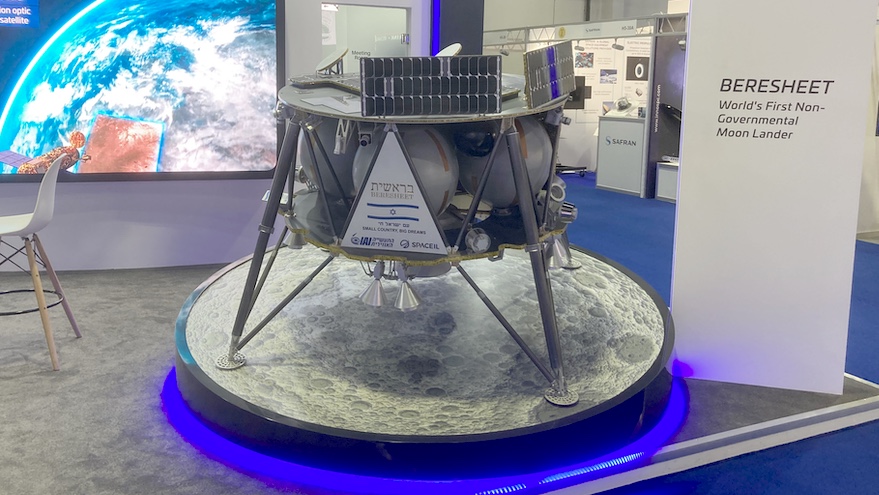WASHINGTON — As India prepares to launch its second lunar lander mission, the fate of a second Israeli lander is in doubt after the organization developing it lost a major source of funding.
India’s Chandrayaan-3 spacecraft is scheduled to launch July 14 on a Geosynchronous Satellite Launch Vehicle Mark 3, also known as LVM-3, from the Satish Dhawan Space Centre. The spacecraft will gradually go from a geostationary transfer orbit to a low lunar orbit, from which Chandrayaan-3 will descend to the lunar surface.
Chandrayaan-3 is similar to India’s first lunar lander flown as part of the Chandrayaan-2 mission, which crashed attempting a soft landing in September 2019. Chandrayaan-3 incorporates several revisions, such as additional fuel, based on the investigation into the failed landing.
That crash took place five months after Beresheet, a spacecraft originally developed by Israeli non-profit organization SpaceIL to compete for the Google Lunar X Prize, crashed attempting its own lunar landing. SpaceIL and Israel Aerospace Industries, which built the spacecraft, later said the lander crashed because one of its inertial measurement units malfunctioned.
SpaceIL announced its intent to pursue a second mission, called Beresheet 2. It would be significantly different from the original mission, with two smaller landers deployed from an orbiter. The mission had been slated to launch in 2025, a date confirmed in a January 2023 announcement of a joint statement of intent between the Israel Space Agency and NASA to cooperate on Beresheet 2. NASA agreed to provide an instrument and communications support for the mission.
That schedule, and the mission itself, is now in question. Like the first mission, SpaceIL projected using philanthropic donations to fund Beresheet 2. However, in May a group of donors announced they were halting future payments to the project after spending $45 million, nearly half its estimated $100 million cost.
In a statement representing the donors, Morris Kahn, a billionaire who also supported the original Beresheet mission, said the decision to halt future payments was not related to any problems with Beresheet 2. “These times obligate us to invest our resources and time in other philanthropic projects,” he stated.
SpaceIL said at the time it would seek alternative funding to continue the mission, but has provided no updates on those efforts since then. The organization did not respond to questions July 10 about the status of Beresheet 2.
In a June 27 presentation at the European Lunar Symposium, Dan Blumberg, chairman of the Israel Space Agency, said work on Beresheet 2 was continuing for now. “We want to do more than we did in the previous one,” he said, including enhanced opportunities for international cooperation. In addition to the NASA agreement, SpaceIL has an agreement with the German agency DLR, which will provide a navigation system for the lander.
He also emphasized educational outreach for the mission. Students will have opportunities to control the orbiter during its two-year mission, selecting regions on the surface to photograph, he said.
Blumberg hinted at SpaceIL’s financial problems in his brief talk, but did not go into details about funding for the mission. “There is a funding issue that we are still dealing with,” he said. “But we’re getting there.”
